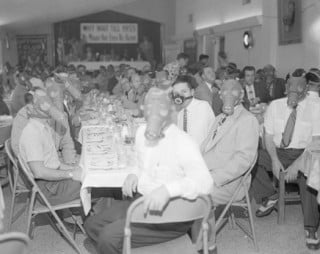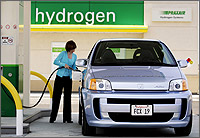Since the days when smog first made its presence felt and known, to a good many, air pollution awareness has done nothing but evolve; it’s been growing in the public’s consciousness, in other words.

That was then. What about now?
To try to answer, we need to go back to two very important and revealing events or episodes in recent area transportation history known more familiarly as “Carmageddon” and “Carmageddon II.”
What this had to do with, specifically, was closures over two separate weekends each about a year apart of a roughly 10-mile stretch of Interstate 405 between the San Fernando Valley and Los Angeles proper to accommodate major roadway construction and improvement work being done. I direct your attention now to a related Air Quality Matters blogpost: “National Dump the Pump Day: The meaning of it all.”
In that post and in referring to a second (such post) from an earlier time, and in providing commentary, I explained the reason behind the closures and reported on the effect on area air those two closures had.
I submitted: “In my post: ‘An annual ‘National Healthy Air Awareness Day’? Nothing to lose save pollution,’ I made more than casual reference to Carmageddon and Carmageddon II, and July 15, 2011 and September 29, 2012, respectively, marked the first days of the corresponding weekends when a 10-mile Sepulveda Pass section of Interstate 405 in southern California was closed to traffic. For safety reasons, the closures were necessary because of demolition of a portion of the Mulholland Drive overpass situated overhead of the 405. In any event, when the required overhead bridge demolition work was completed, the 405 was again reopened to traffic.
“At any rate, it was determined that as a result of that 10-mile section of roadway being closed over the two weekends in question, and ‘Because traffic dipped all over southern California that [July 15-17] weekend, air quality also improved 75 percent in parts of West Los Angeles and Santa Monica, and an average of 25 percent regionally – from Ventura to Yucaipa and Long Beach to Santa Clarita,’ I pointed out, citing information from ‘“Carmaheaven’: Closure of 405 in 2011 improved air quality up to 83 percent,’ a University of California at Los Angeles (UCLA) news release.”
Air-wise, to those who took note, what actually occurred was quite, quite revealing for sure (to be taken in both the literal and figurative senses).
Not surprisingly, subsequent to all the construction and improvement work being completed, traffic snarls in Sepulveda Pass became no less an issue and pollution as a result is right back up to pre-“Carmageddon” and pre-“Carmageddon II” levels.
That we’ve researched our past is one thing. Where we are on the automated land-based transportation horizon in going forward, is quite another.
And, where is it we are going? It could very well be that right now there is transportation history being made, a transformation in transportation so unlike that of anything ever witnessed before, such leaning in the direction of motorized transportation related to human-piloted automation transitioning to truly self-propelled “autonomobilization.”
Whether moving this way or that, the $64 million question becomes: Will the matter of air quality weigh even more heavily on people’s minds than what it does right now?
Definitely something to think about as it isn’t just that transportation emissions are growing. It is that such emissions from said sector should be an ever more growing concern.
– Alan Kandel

